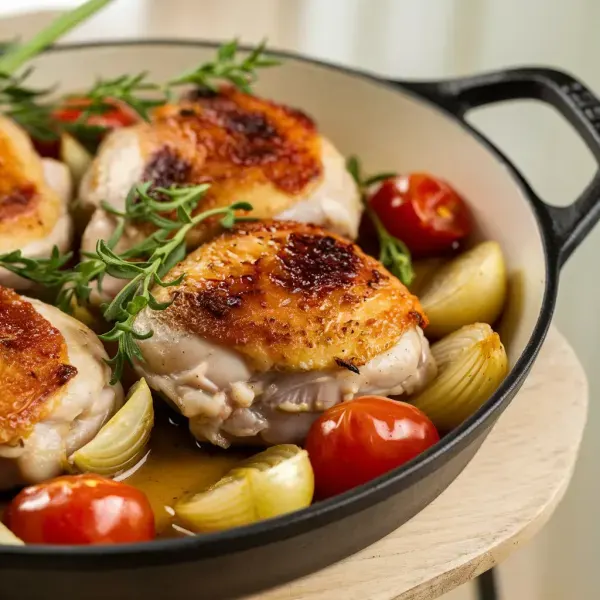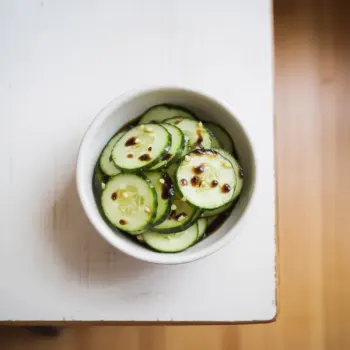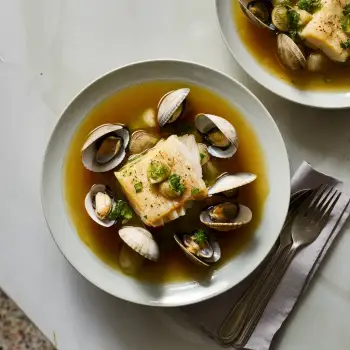
 90 minutes
90 minutesA savory dish featuring tender chicken thighs cooked with shallots and white wine, finished with fresh cherry tomatoes.


tablespoons
tablespoons
tablespoons
tablespoons
cups
tablespoons
Tarragon Sprigs
sprigs
Cherry Tomatoes, Halved
cups
1. Prepare the Chicken
Pat the chicken thighs dry with a paper towel. Sprinkle them evenly with the flour, kosher salt, and black pepper.
2. Brown the Chicken
In a large, heavy-bottomed pot or skillet, melt the unsalted butter over medium heat. Place the chicken thighs in the pot, skin-side down, and cook until browned and crisp, about 5-7 minutes per side. Set the chicken aside on a plate.
3. Cook the Shallots
Add the whole, peeled shallots to the pot. Sauté them in the remaining butter and chicken fat until softened and caramelized, about 10-12 minutes.
4. Deglaze the Pot
Pour in the white wine to deglaze the pot, scraping up any browned bits with a wooden spoon. Stir in the Dijon mustard and add the tarragon sprigs.
5. Simmer the Chicken
Return the browned chicken thighs to the pot, nestling them among the shallots. Cover the pot and reduce the heat to low. Allow to simmer gently for about 30 minutes.
6. Reduce the Sauce
Remove the lid and let the sauce reduce and thicken for an additional 15-20 minutes.
7. Add Cherry Tomatoes
Add the halved cherry tomatoes to the pot and stir them in lightly. Warm through but retain their shape and freshness.
Replace white wine with marsala wine. Add sliced mushrooms for an earthy, savory complement.
Replace chicken thighs with pork chops. Use apple cider instead of white wine. Add some fresh sage for a complementary flavor.
Swap out the white wine for Marsala wine. Marsala adds a rich, sweet, and slightly nutty flavor, providing a deeper complexity that marries well with the shallots and herbs.
Replace chicken thighs with salmon fillets. Use fresh dill instead of thyme and rosemary. Swap white wine for a mix of lemon juice and a little water.
Instead of the usual herbs like rosemary and parsley, incorporate lemon zest and fresh thyme. The lemon zest will add a bright, zesty layer, complementing the white wine's acidity, while thyme adds a more floral earthiness.




Comments (0)